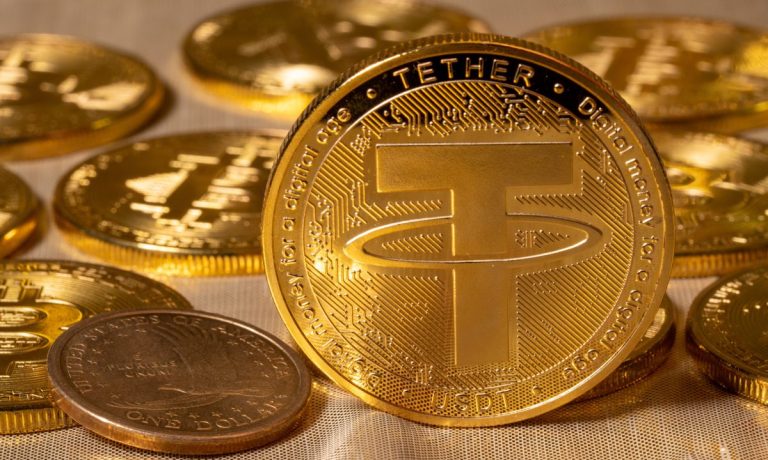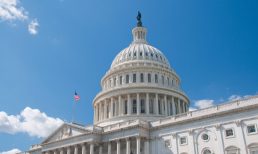The chairman of the Senate Banking Committee sent the issuers of a half-dozen stablecoins letters Wednesday (Nov. 24), demanding they explain how their tokens are minted and redeemed.
Many of the questions were the same, but they were largely aimed at, or at least caused by, one company: Tether.
Read more: Senate Wants Answers From Tether CEO
The largest stablecoin issuer by far, Tether has $72.5 billion USDT coins in circulation — almost half of the entire $150 billion stablecoin market. That’s about $21 billion more than all the other companies Sen. Sherrod Brown contacted combined. These included the issuers of the No. 2 stablecoin, USDC, with a market capitalization of $37 billion, and No. 3 stablecoin, BUSD, with a market cap of $12.9 billion.
USDT is also the most controversial stablecoin, with serious questions raised about its governance and reserves, and especially about its ability to damage the financial system, particularly if it loses its $1 peg.
Most stablecoins maintain their $1 value by holding a one-to-one reserve of fiat currency or other highly liquid and — in theory — safe investments. They are largely used to facilitate the trading and lending of cryptocurrencies like bitcoin and ether.
Advertisement: Scroll to Continue
Brown’s six questions all demanded answers about how the stablecoins are and have been bought, issued and redeemed.
But the key was the sixth question: “Please summarize any internal reviews or studies your company has conducted about how specific levels of redemptions would affect Tether, including its convertibility into U.S. dollars, or would affect the financial position of your company.”
Which is to say: What would happen if there was a run on your stablecoin?
Run for the Hills
In traditional bank runs, so many buyers try to redeem their funds that the bank cannot meet the demand and fails. It’s terrible for the customers, but if that bank is big enough, a run could pose a systemic risk to the U.S. economy.
In the case of a stablecoin, its value could — and in several smaller cases has — fallen to zero.
That’s where Tether stands out.
Most cryptocurrencies are bought and sold in stablecoins, and Tether is used in a huge number of these transactions. To put it in perspective, the 24-hour volume of Tether trades on Wednesday was $86.1 billion — almost 20% more than its total market capitalization. Without USDT, it would become a lot harder to buy and sell any cryptocurrency.
But more damaging, many cryptocurrency investors, particularly large ones, park huge sums of money in Tether.
If Tether failed and lost its one-to-one peg with the dollar, there “would be a severe liquidity shock to the broader cryptocurrency market,” J.P. Morgan said earlier this year.
Five Questions for Tether
Brown’s letter was pretty clear that the committee is seeking only a “greater understanding of the basic operation, and limitations” of stablecoins like Tether as it tries to understand how much risk there is to the broader economy.
Here are the tougher questions about Tether that need to be asked.
- Do you have enough cash in your reserves to cover a surge in redemptions?
There’s a pretty solid case to be made that the answer is no. After years of refusing to provide any audit of its reserves — many of them claiming USDT was backed “one-to-one” by U.S. dollars — Tether in May published an “attestation” by a Caribbean auditing firm, Moore Cayman, that revealed that just 2.9% of its reserves were held in cash.
Tether has said that it has always been able to cover redemptions, even when bitcoin collapsed some 30% in two weeks this past May.
- So, where’s the rest, and how sound is it?
Nearly half of Tether’s reserves were held in commercial paper, which are short-term unsecured loans to companies. Tether did not reveal any information about the ratings of these loans, nor to which companies they were made.
Another 12.5% was in secured loans, 10% in corporate bonds and precious metals, and about 18% in fiduciary deposits, and the rest in cryptocurrency, T-bills and other investments.
- Why haven’t your reserves been formally audited?
Another problem is that an attestation is not an audit. An audit would show an income statement, cash flow, a balance sheet detailing assets, liabilities and equity. An attestation is just a snapshot in time of the company’s finances.
- Why did it take a lawsuit by the New York Attorney General to get you to release any information about your reserves?
Tether only made public any information about its reserves after settling a lawsuit by the NYAG’s office, which had accused the company of fraud and state securities law violations after it concealed that its reserves dropped to 74% of its market cap after loaning sister company Bitfinex hundreds of millions of dollars in 2018. Bitfinex — which shares management and ownership — had been robbed of $850 million by its payment processors in 2017.
The suit was settled without an admission of wrongdoing with an $18.5 million fine — and promise to provide details of its reserves — in February. The Commodity Futures Trading Commission (CFTC) fined Tether $41 million for those actions in October.
- How large of a redemption run could Tether cover before being unable to meet demands?
If Tether was unable to meet redemption demands, it could lose its $1 peg, unravelling the entire cryptocurrency market. Such a collapse is a scenario that raised “significant concerns from an investor protection and market integrity perspective,” according to a long-awaited stablecoin report issued Nov. 1 by the interagency President’s Working Group on Financial Markets.
See more: Stablecoin Risks Warrant Legislation
The report’s solution was to recommend that congress should pass legislation allowing only federally insured banks and depository institutions to issue stablecoins.
That’s why the head of the Senate Banking Committee wants to know how big a run Tether and its fellow stablecoin issuers can withstand.




